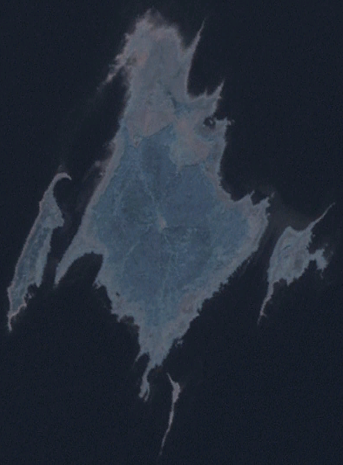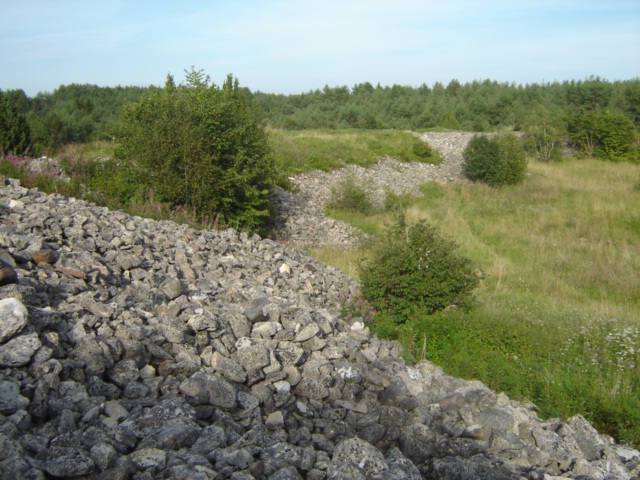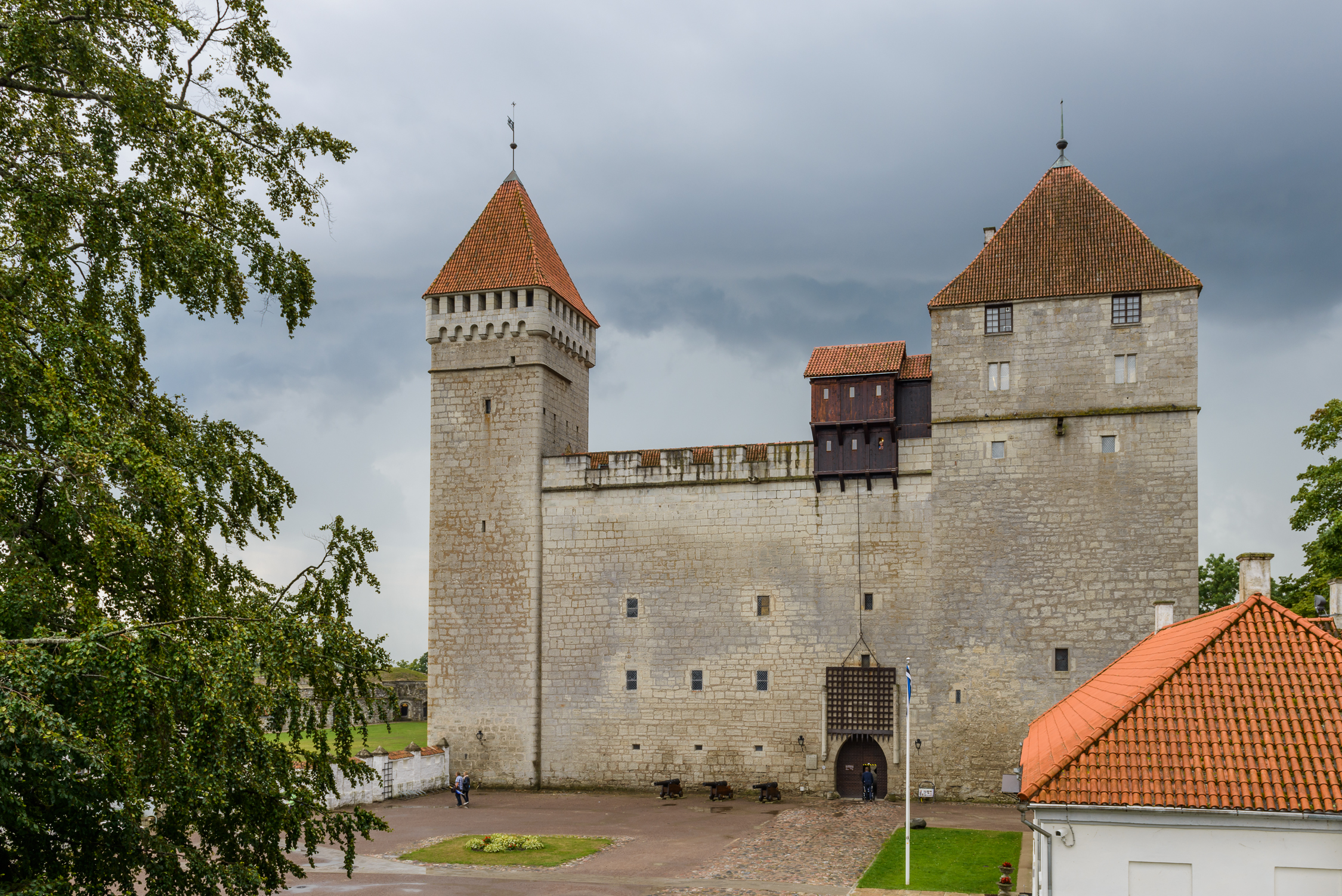|
Abruka
Abruka is an 8.78 km2 Estonian island in the Gulf of Riga, 4 km south of the island of Saaremaa. Together with few neighbouring smaller islands (Vahase, Kasselaid, Linnusitamaa and Kirjurahu) Abruka forms the village of Abruka, which is part of Saaremaa Parish, Saare County. (retrieved 28 July 2021) The village has a population of 33 (as of 1 January 2011) and an area of 10.1 km2. The first records about the population on Abruka originate from the Middle Ages, when the Bishop of Ösel-Wiek founded a horse breeding manor () there. Permanent population developed in the 18th century. 1881–1972 an elementary school operated on Abruka. Abruka is the site of a Central European-type broadleaf forest, which is rare in the region. To protect this a nature reserve was created in 1937. There's a library (located in the harbour building) and a museum which is located on the side of the former manor park in the oldest building on Abruka (The Abruka House). Abruka can be r ... [...More Info...] [...Related Items...] OR: [Wikipedia] [Google] [Baidu] |
Vahase
Vahase is a Estonian islet in the Gulf of Riga. It's located about west of the island of Abruka. Administratively Vahase belongs to the Abruka village in Lääne-Saare Parish, Saare County. Vahase arose from the sea about thousand years ago. The island has a tiny forest with junipers, oaks, and pines. Because of shallow water Vahase is accessible from Abruka by foot. There's only one farmstead on the island. Writer Albert Uustulnd has described Vahase in his novel ''Tuulte tallermaa''. See also *List of islands of Estonia This is an ''incomplete'' list of islands of Estonia. There are 2355 islands in total. Largest islands Incomplete list See also *List of islands in the Baltic Sea *List of islands Notes References {{Authority control Estonia ... References Uninhabited islands of Estonia Saaremaa Parish Estonian islands in the Baltic {{saare-geo-stub ... [...More Info...] [...Related Items...] OR: [Wikipedia] [Google] [Baidu] |
Linnusitamaa
Linnusitamaa (also known as Linnusita saar) is a uninhabited Estonian islet in the Gulf of Riga. It's located about south of the island of Abruka. Administratively Linnusitamaa belongs to the Abruka village in Lääne-Saare Parish, Saare County. The name is a curiosity, literally meaning "bird shit land" in Estonian. However, as the Estonian word does not have as offensive connotations as the English equivalent, it would more properly be translated as "guano island". The ''New York Times'' reported that, during the 1905 Russian Revolution against Czarist Russia, Linnusitamaa, like other Baltic islands, declared itself an independent republic. See also *List of islands of Estonia This is an ''incomplete'' list of islands of Estonia. There are 2355 islands in total. Largest islands Incomplete list See also *List of islands in the Baltic Sea *List of islands Notes References {{Authority control Estonia ... References Uninhabited islands of Estoni ... [...More Info...] [...Related Items...] OR: [Wikipedia] [Google] [Baidu] |
Kasselaid
Kasselaid is a uninhabited Estonian islet in the Gulf of Riga. It is located about east of the island of Abruka. Administratively Kasselaid belongs to the Abruka village in Lääne-Saare Parish, Saare County. See also * List of islands of Estonia This is an ''incomplete'' list of islands of Estonia. There are 2355 islands in total. Largest islands Incomplete list See also *List of islands in the Baltic Sea *List of islands Notes References {{Authority control Estonia ... References Uninhabited islands of Estonia Saaremaa Parish Estonian islands in the Baltic {{saare-geo-stub ... [...More Info...] [...Related Items...] OR: [Wikipedia] [Google] [Baidu] |
Kirjurahu ...
This is an ''incomplete'' list of islands of Estonia. There are 2355 islands in total. Largest islands Incomplete list See also *List of islands in the Baltic Sea *List of islands Notes References {{Authority control Estonia Islands An island (or isle) is an isolated piece of habitat that is surrounded by a dramatically different habitat, such as water. Very small islands such as emergent land features on atolls can be called islets, skerries, cays or keys. An island ... [...More Info...] [...Related Items...] OR: [Wikipedia] [Google] [Baidu] |
Saare County
Saare County ( et, Saare maakond or ''Saaremaa''; la, Oesel; german: Ösel; sv, Ösel) is one of 15 counties of Estonia. It consists of Saaremaa, the largest island of Estonia, and several smaller islands near it, most notably Muhu, Ruhnu, Abruka and Vilsandi. The county borders Lääne County to the east, Hiiu County to the north, and Latvia to the south. In January 2013 Saare County had a population of 30,966, which was 2.4% of the population of Estonia. Municipalities The county is subdivided into municipalities. There are 3 rural municipalities ( et, vallad – parishes) in Saare County. Geography The largest islands of the county are Saaremaa, Muhu, Ruhnu, Abruka and Vilsandi. Arable land is and it has a mild maritime climate. The mean annual air temperature is and the mean annual precipitation is . Religious affiliations The main religious affiliations are Lutheran, Orthodox and Baptist, but only 33.6% consider themselves religious. Ancient Saare county (Oese ... [...More Info...] [...Related Items...] OR: [Wikipedia] [Google] [Baidu] |
Jüri Tuulik
Jüri Tuulik (22 February 1940 Abruka island, Saare County – 3 June 2014 Kuressaare) was an Estonian writer and playwright. In 1963 he graduated from Tartu State University in Estonian philology. After graduating he worked at the newspapers ''Edasi'', ''Noorte Hääl'' and the journal ''Vesikaar''. Since 1969 he was a professional writer. His twin brother was the writer Ülo Tuulik and his cousin was writer Juhan Smuul. Since 1972 he was a member of Estonian Writers' Union. Awards *1977: Eduard Vilde Literature Prize *1979: Juhan Smuul Literature Annual Award *1981: Juhan Smuul Annual Literature Prize *1986: Meritorious Writer of the Estonian SSR *1998: August Mälk Short Story Award *1999: August Mälk Short Story Award *2000: August Mälk short story award *2005: Oskar Luts Humor Award *2005: Hendrik Krumm Cultural Scholarship *2009: Friedebert Tuglas Short Story Award Friedebert Tuglas short story award ( et, Friedebert Tuglase novelliauhind) is an Estonian literary ... [...More Info...] [...Related Items...] OR: [Wikipedia] [Google] [Baidu] |
Ülo Tuulik
Ülo Tuulik (born 22 February 1940, in Abruka Island, Saare County) is an Estonian writer. In 1963 he graduated from Tartu State University in philology. 1964-1966 he was the chairman of Young Authors' Association in Tallinn. Since 1974 he was a member of Estonian Writers' Union. His twin brother was writer Jüri Tuulik (1940-2014) and his cousin was writer Juhan Smuul Juhan Smuul (18 February 1922 – 13 April 1971) was an Estonian writer. Until 1954 he used the given name Johannes Schmuul. Career Smuul was born in Koguva village on the island of Muhu to Jüri and Ruudu Schmuul (née Tuulik). He had three .... Selected works * 1972: prose collection ''Vihm Gibraltaris'' * 1974: novel ''Sõja jalus'' ('In the Way of War') * 1979: prose collection ''Atlandi kirjad: jutustused'' References {{DEFAULTSORT:Tuulik, Ulo Living people 1940 births Estonian male writers Estonian male novelists Estonian male poets Estonian editors 20th-century Estonian poets 21st-centu ... [...More Info...] [...Related Items...] OR: [Wikipedia] [Google] [Baidu] |
Saaremaa
Saaremaa is the largest island in Estonia, measuring . The main island of Saare County, it is located in the Baltic Sea, south of Hiiumaa island and west of Muhu island, and belongs to the West Estonian Archipelago. The capital of the island is Kuressaare, which in January 2018 had 13,276 inhabitants. The whole island had a recorded population in January 2020 of 31,435. Etymology In old Scandinavian sources, Saaremaa is called ''Eysysla'' and in the Icelandic Sagas ''Eysýsla'' (Old Norse: ), meaning "the district (land) of island". The island is called ''Saaremaa'' in Estonian language, Estonian, and in Finnish language, Finnish ''Saarenmaa''—literally "isle land" or "island land",Toomse, Liine. "10 Estonian Islands You Should Visit." http://www.traveller.ee/blog/tallinn/10-estonian-islands-you-should-visit. Retrieved 8 March 2016. i.e. the same as the Scandinavian name for the island. The old Scandinavian name is also the origin of the island's name in Danish language, D ... [...More Info...] [...Related Items...] OR: [Wikipedia] [Google] [Baidu] |
Kuressaare
Kuressaare () is a town on Saaremaa island in Estonia. It is the administrative centre of Saaremaa Parish and the capital of Saare County. Kuressaare is the westernmost town in Estonia. The recorded population on 1 January 2018 was 13,276. The town is situated on the southern coast of Saaremaa island, facing the Gulf of Riga of the Baltic Sea, and is served by the Kuressaare Airport, Roomassaare harbour, and Kuressaare yacht harbour. Names Kuressaare's historic name Arensburg (from Middle High German ''a(a)r:'' eagle, raptor) renders the Latin denotation ''arx aquilae'' for the city's castle. The fortress and the eagle, tetramorph symbol of Saint John the Evangelist, are also depicted on Kuressaare's coat of arms. The town, which grew around the fortress, was simultaneously known as Arensburg and Kuressaarelinn; the latter name being a combination of ''Kuressaare''—an ancient name of the Saaremaa Island—and ''linn'', which means ''town''.Pospelov, p. 28 Alternative ... [...More Info...] [...Related Items...] OR: [Wikipedia] [Google] [Baidu] |
Temperate Broadleaf And Mixed Forest
Temperate broadleaf and mixed forest is a temperate climate terrestrial habitat type defined by the World Wide Fund for Nature, with broadleaf tree ecoregions, and with conifer and broadleaf tree mixed coniferous forest ecoregions. These forests are richest and most distinctive in central China and eastern North America, with some other globally distinctive ecoregions in the Caucasus, the Himalayas, Southern Europe, Australasia, Southwestern South America and the Russian Far East. Ecology The typical structure of these forests includes four layers. * The uppermost layer is the canopy composed of tall mature trees ranging from high. Below the canopy is the three-layered, shade-tolerant understory that is roughly shorter than the canopy. * The top layer of the understory is the sub-canopy composed of smaller mature trees, saplings, and suppressed juvenile canopy layer trees awaiting an opening in the canopy. * Below the sub-canopy is the shrub layer, composed of low growi ... [...More Info...] [...Related Items...] OR: [Wikipedia] [Google] [Baidu] |
Horse Breeding
Horse breeding is reproduction in horses, and particularly the human-directed process of selective breeding of animals, particularly purebred horses of a given breed. Planned matings can be used to produce specifically desired characteristics in domesticated horses. Furthermore, modern breeding management and technologies can increase the rate of conception, a healthy pregnancy, and successful foaling. Terminology The male parent of a horse, a stallion, is commonly known as the ''sire'' and the female parent, the mare, is called the ''dam''. Both are genetically important, as each parent genes can be existent with a 50% probability in the foal. Contrary to popular misuse, "colt" refers to a young male horse only; "filly" is a young female. Though many horse owners may simply breed a family mare to a local stallion in order to produce a companion animal, most professional breeders use selective breeding to produce individuals of a given phenotype, or breed. Alternatively, a ... [...More Info...] [...Related Items...] OR: [Wikipedia] [Google] [Baidu] |
Bishopric Of Ösel-Wiek
In Ecclesiastical polity, church governance, a diocese or bishopric is the ecclesiastical district under the jurisdiction of a bishop. History In the later organization of the Roman Empire, the increasingly subdivided Roman province, provinces were administratively associated in a larger unit, the Roman diocese, diocese (Latin ''dioecesis'', from the Greek language, Greek term διοίκησις, meaning "administration"). Christianity was given legal status in 313 with the Edict of Milan. Churches began to organize themselves into Roman diocese, dioceses based on the Roman diocese, civil dioceses, not on the larger regional imperial districts. These dioceses were often smaller than the Roman province, provinces. Christianity was declared the Empire's State church of the Roman Empire, official religion by Theodosius I in 380. Constantine the Great, Constantine I in 318 gave litigants the right to have court cases transferred from the civil courts to the bishops. This situ ... [...More Info...] [...Related Items...] OR: [Wikipedia] [Google] [Baidu] |







